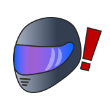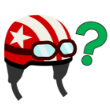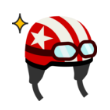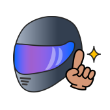In this article, we will go touring with a friend.



This is the first tour on my new motorcycle, so I'm super excited!
More than likely though, I'm going to be tired after a long ride... Any suggestions to help with fatigue?

You need to know about the correct riding positions! Riding in the correct position makes driving for long periods easier and less tiring!

I see! It is important to know about correct riding positions, isn’t it?

Okay... Now let me explain to you about the correct riding position points.
1.Correct Riding Position Points
Riding with the correct posture is less tiring, safer and more comfortable, even after riding for an extended amount of time.
There are many types of motorcycles, but the basic riding position is identical for all of them.

Exactly which riding positions should I know about?

Let’s learn about the seven points explained on the next page!
I'll start with an explanation of the naked type motorcycle, the typical touring motorcycle.

[Naked Type]
① Eyes
Maintain a clear line of sight, “wide and further ahead”, to get a good view of the road ahead.
② Shoulders
Letting go of the tension in your shoulders, i.e., relaxing, is important.
③ Elbows
Relax your elbows to hold onto the handlebar naturally.
④ Hands
Lightly grip the throttle and brake at a natural angle so you can manipulate them smoothly.
⑤ Waist
Sit in a position where you can easily steer the handlebar, your knees are not cramped, and your arms are not fully extended.
⑥ Knees
Knees should lightly grip the fuel tank.
⑦ Feet
Rest the arch of your foot on the step and lightly place your toes on the brake pedal and foot pedal to manipulate them smoothly.

So basically, this explanation is the point you're trying to make?

That’s right! Next, let me explain about the proper riding position for each motorcycle type.
2.Proper Riding Positions Based on Each Motorcycle Type
There are different types and categories of motorcycle and each have their own ride qualities and characteristics. It is important to understand the differences between each type in conjunction with the basic points described earlier.

Earlier you mentioned the naked type motorcycle.
What other types should I know about?

It’s important that you know the differences between types! Alright then, let me explain it to you.

[Cub Type]
The basic position of the rider is seated upright in a comfortable position. Both knees should not point outward and the toes of the feet on the steps should point straight forward.

[Scooter Type]
The scooter type has different characteristics than the naked type. It has an automatic transmission and a floor-type step. The rider should sit with toes facing forward and have no edges outside the body of the vehicle.

[Off-road/Adventure Type]
The off-road/adventure type has a tall handlebar position and a high body. Its handlebar has a large steering angle. Therefore, the rider should sit with their hip positioned where it does not interfere with steering the handlebar.

These are perfect examples illustrating the differences between each type!

Brilliant! I’ll need to improve my knowledge of the proper riding position based on the information for my own bike type.
REFERENCE
Traffic Safety Promotion Operations [Point of Traffic Safety -motorcycle-]
3.Summary
It is important to adjust the positions of your eyes, shoulders, elbows, hands, hips, knees, and feet so that your riding posture is smooth and no stress is placed on your body. Each type of motorcycle has different characteristics. Know the differences so that you can ride safely and comfortably.


Now that you know the correct riding positions, you can tour with confidence!

This time around, I focused on riding positions. Other points must be kept in mind as well when on an actual ride. I'll explain these the next time!

Today is a great day for touring! We have quite a long journey. Let’s ride safely and be careful!